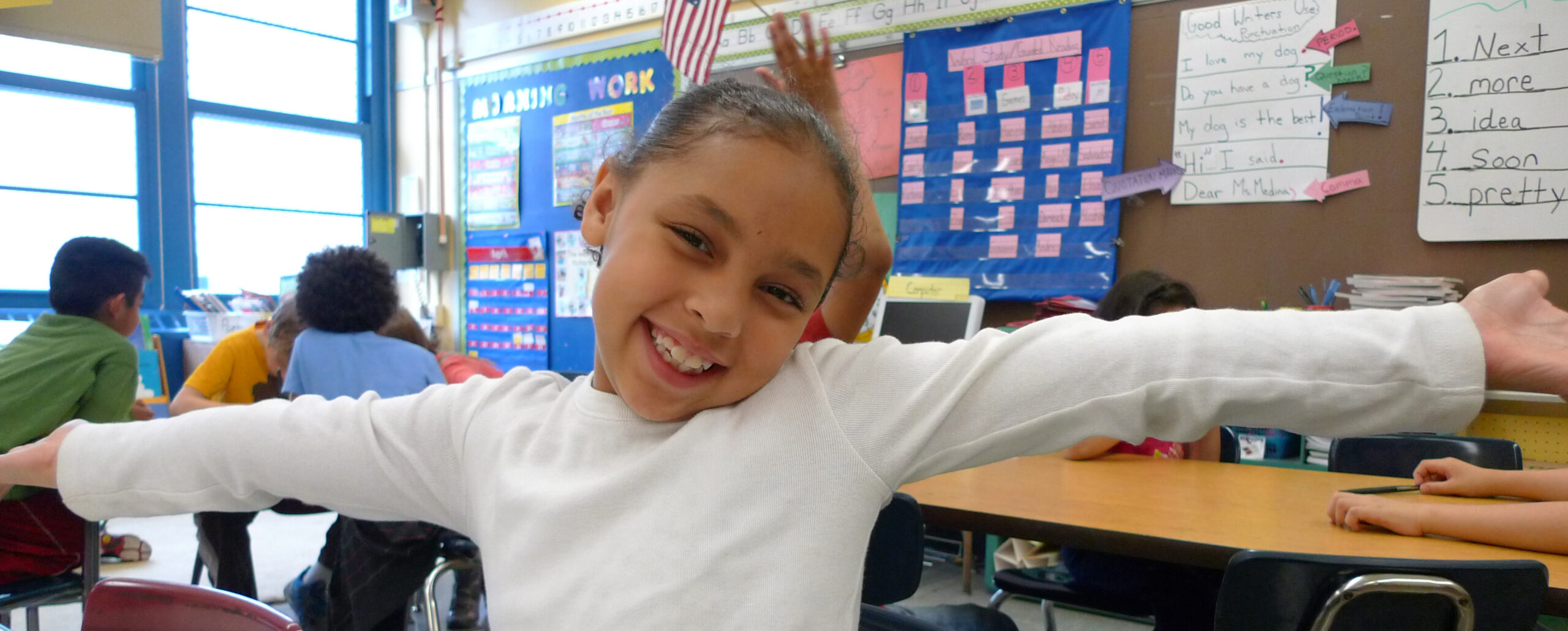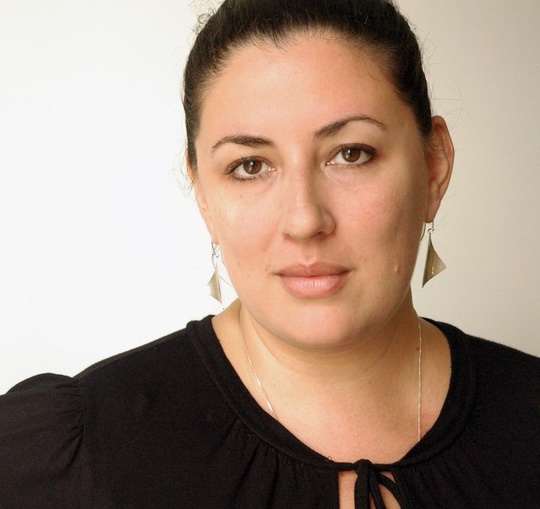In Part 1 of The Arts of Speech, Matthew Baganz uses movement and imagery to help children learn the purpose of nouns, verbs, adjectives, and adverbs.
Lesson Overview
Grade: 3–5
Download: The Arts of Speech Part 1: Unifying Meaning with Parts of Speech
Common Core State Standard:
- ELA-Literacy.L.K-5.1 Demonstrate command of the conventions of standard English grammar and usage when writing and speaking.
Lesson Objectives:
Students will:
- Demonstrate their understanding of nouns, verbs, adjectives, and adverbs through imagery.
- Classify words into their appropriate categories (parts of speech) according to their functions in sentences.
- Understand that some parts of speech create more concrete images than others.
Guiding Questions:
- What do people think of when they hear different kinds of words?
- How do different words create or change the pictures we form in our heads?
- What are the functions of the different parts of speech?
- How do we use different parts of speech to send messages to each other?
Warm-Up (7 minutes each):
Note: Based on available time, one or both of the warm-up activities may be facilitated. The goal in each activity is to highlight that some parts of speech (verbs and nouns) create more concrete images than others (adverbs and adjectives).
- Explain to students that people use words to send messages to others, and these messages must be clear in order to convey the same meaning to different people. Line students up along the classroom perimeter so they face the walls and can’t see one another. Tell them you will say only one word, and they must act this word out however they can. The word is slowly. Students may stall as they realize they don’t know what to do After students eventually perform different movements, ask students to turn around and observe one another’s movements. Facilitate a brief discussion about why students were doing different things, even though they all had the same word to act out.
Closing question: If we wanted everyone to do the same thing, what other words could the teacher have said in addition to slowly? (Students tend to respond with verbs.) What part of speech would we need to unify students’ slow actions? (Answer: verb.)
- Distribute the Arts of Speech handout and ask students to turn it over onto the blank backside. Ask them to draw the word beautiful. After students have sketched their pictures, invite them to share what they drew and follow up with a discussion speculating why there is a variety of images. Write the list of images on the board and discuss what is similar and different about them. Images may vary from flowers to rainbows, but note that many students might draw people, and this can lead into a discussion about the way we see and place ourselves at the focal point of the world around us.
Closing question: What part of speech would have guided most students to draw the same thing? (Answer: noun.)
Closing thought: Explain to students that although people communicate through words, these words form images in our heads. We don’t think in letters, we think in pictures; therefore, it is important to understand the different functions of words and their different roles in creating the pictures in our heads.
Mentor Text, Discussion, and Sketching (25 minutes):
- Introduce the front side of the Arts of Speech handout, noting the four columns on the page (Noun, Adjective, Verb, Adverb) and the six rows. Review the definitions of the parts of speech and explain how each part of speech serves a different function that helps clarify meaning. Nouns often present concrete objects, adjectives decorate these objects, verbs animate these objects, and adverbs direct these animations.
- Explain that students will work through the handout one row at a time, moving from left to right as the teacher says a noun, an adjective, a verb, and then an adverb. Students will develop the previous sketch they draw, so the noun they draw in the first column of Row 1 will be redrawn in all boxes within that row, with each new detail rolling over to the next box.
- Provide a series of words for students to write and sketch in the various rows of the handout. Sample word series are included in the table below.
- After Row 1 is completed, allow students to compare their pictures with their neighbor’s. Point out that the first image in the first row, being just a noun, will have more differences among the various artists than the last image in the first row, which requires a noun with a specific description to be doing something specific in a specific way. When more parts of speech are used, a message is more accurately delivered to different people.
Here is a suggested sequence of activities for the 6 rows on the handout:
- Row 1: Teacher provides series of words for students to sketch and students compare what they’ve drawn with a neighbor.
- Row 2: Teacher provides series of words for students to sketch and students again share their images.
- Row 3: Formative assessment as described in Writing Section below.
- Row 4: Teacher provides series of words for students to sketch.
- Row 5: Students work with partners to create their own series of words. One partner speaks words while the other sketches, and then vice versa.
- Row 6: Formative assessment as described in Writing Section below.
Samples of teacher-provided word series:
| Noun | Adjective | Verb | Adverb |
| fish | blue | jumping | backward |
| boy | big | crying | happily |
| cloud | dark | floating | low |
| computer screen | cracked | blinking | brightly |
| student | angry | smiling | sarcastically |
| kitten | tiny | purring | ferociously |
Writing (10 minutes):
- Between exercises within the Mentor Text, Discussion, and Sketching section, announce to students that for the next row, you will say a series of twenty words. After they put the words in the right columns, they will write brief sentences using the words. This step is important to provide students with context and illustrate the words’ different functions.
Students use one row to write these words in the appropriate part of speech columns. Inform students that they will write several words within each of the four boxes during this exercise. Teachers may use this activity as a formative assessment for Row 3 by walking around and gauging how accurately students are placing the various words, and it may be used as a summative assessment for Row 6, measuring student understanding of the parts of speech based on the sentences they wrote.
Here are two sample word lists for this section of the lesson:
- cow, stand, blue, dog, jump, really, quickly, scary, sick, almost, school, pencil, chilly, cry, fly, shy, very, sit, peace, sadly
- boring, yell, lightly, horribly, backpack, long, restaurant, think, argue, later, water, awesome, road, sister, look, cheerfully, weird, sometimes, smile, difficult
| Noun | Adjective | Verb | Adverb |
| cow, dog, school, pencil, peace | blue, scary, sick, chilly, shy | stand, jump, cry, fly, sit | really, quickly, almost, very, sadly |
| backpack, restaurant, water, road, sister | boring, long, awesome, weird, difficult | yell, think, argue, look, smile | lightly, horribly, later, cheerfully, sometimes |
Closing (8 minutes):
- As a think/pair/share activity, ask students to decide which part of speech they feel is most important in conveying meaning. After they discuss their ideas with their partners, open the discussion to the whole class and allow students to argue their opinions. There is no right answer, but students will be engaged in discussing the functions of the various parts of speech.
Materials:
- Arts of Speech handout
- Colored pencils
Multimodal Approaches to Learning: Visual-Spatial, Verbal-Linguistic, Bodily-Kinesthetic, Interpersonal, Intrapersonal
Matthew Baganz holds a bachelors degree in creative writing and a masters degree in multicultural education. Matthew has been teaching for 13 years, and he also works on educational marketing projects and is the PYP Maths coordinator at Strothoff International School in Dreieich, Germany.



